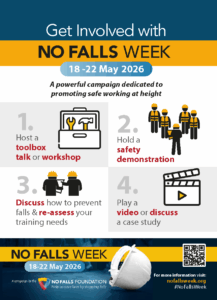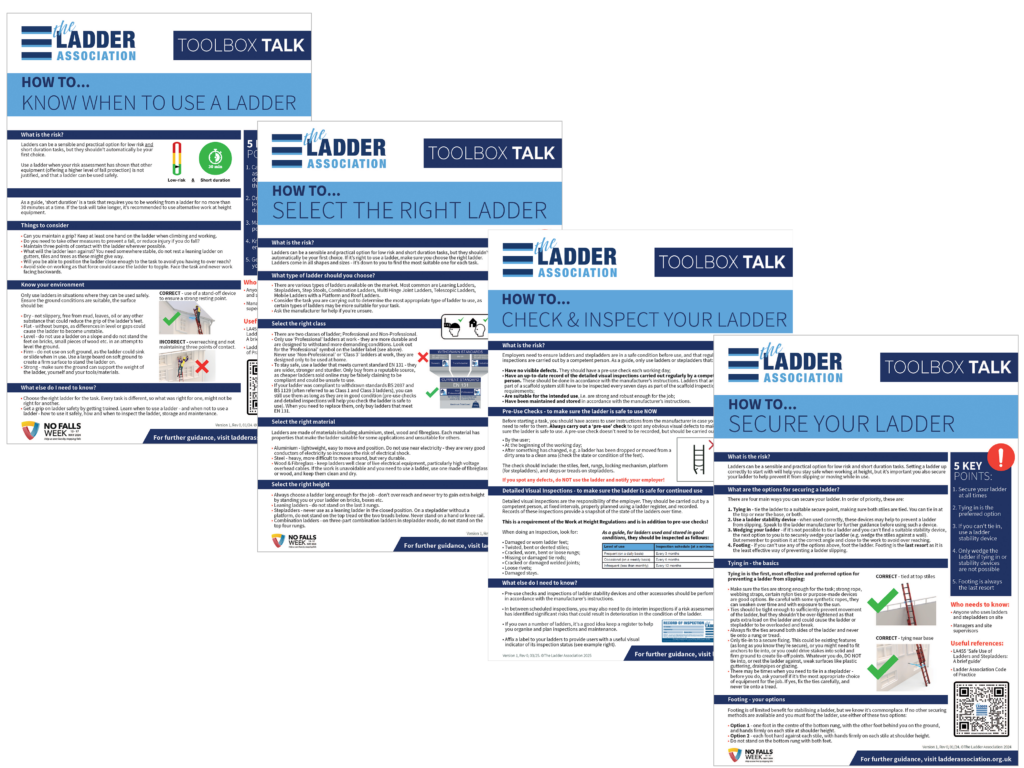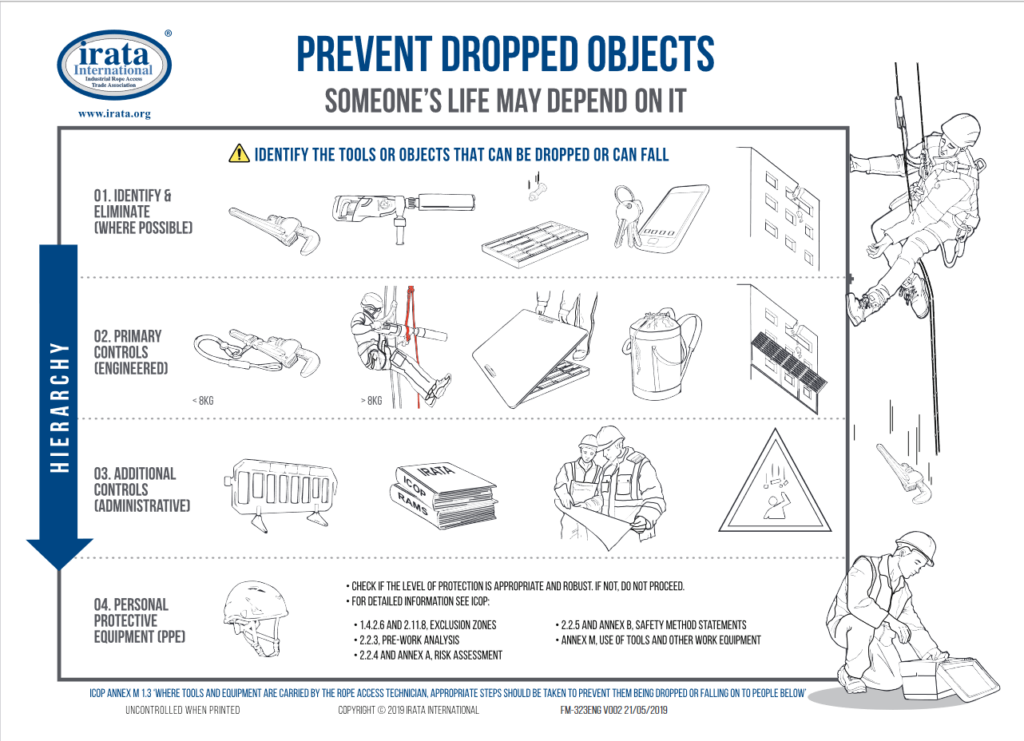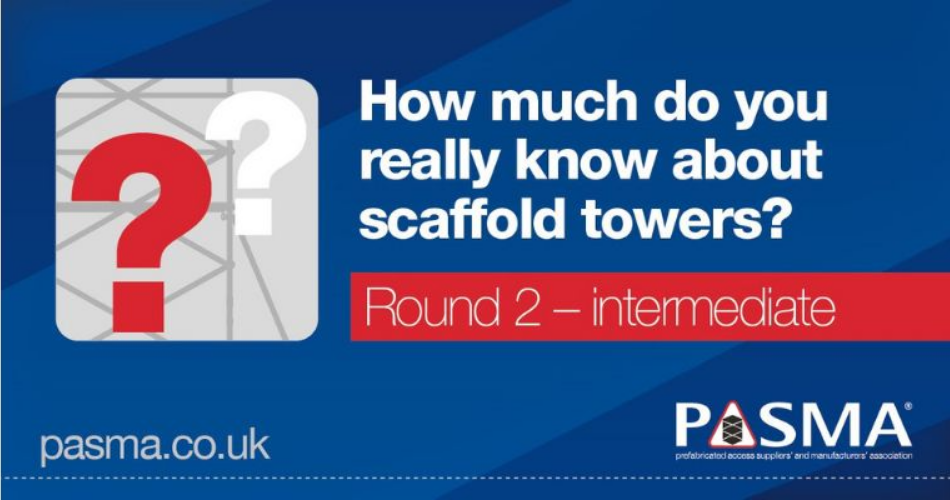Downloads
Help us bring No Falls Week to life
Make sure you bookmark this page – new resources will be added in the run up to No Falls Week

Resources you can use during NO FALLS WEEK
Start planning now how you will get involved in No Falls Week! You might want to hold an in-person safety event, deliver toolbox talks to your staff, or have a safety stand-down and get all your team together to reinforce the importance of safe working at height. Whatever you decide, we have gathered a range of materials and toolkits from our friends at the Access Industry Forum (AIF) to help you make the most of the week.
LET EVERYONE KNOW YOU'RE SUPPORTING NO FALLS WEEK
NO FALLS WEEK LOGOS

You might have your own materials you want to deliver during No Falls Week, or you might want to add a ‘badge’ to your website and existing promotional material. See enclosed logo guidelines.
EMAIL SIGNATURE & WEB BANNERS

Make sure you use all opportunities to let your wider network of colleagues and business contacts know you’re supporting No Falls Week.
Make sure you hyperlink your email signature graphic to nofallsweek.org
SOCIAL MEDIA
TOOLKIT

Help us spread the word with our social media toolkit; we’ve got graphics and suggested text to use – and don’t forget to always use the hashtag #NoFallsWeek
DOWNLOAD THE RESOURCES TO USE IN YOUR WORKPLACE:
Starting with...SUPPORT POSTER & FALLS FROM HEIGHT INFOGRAPHICS
Falls from Height Infographic Poster:

Latest stats due for release in November 2025!
GENERAL WORK AT HEIGHT GUIDANCE
No Falls Foundation Pocket Guide:
Developed by the No Falls Foundation, this handy pocket guide highlights the key areas to consider before working at height.
The No Falls Foundation is devoted to people who work at height, is dedicated to preventing falls from height and helping people affected by the life-changing consequences.
It aims to foster greater awareness and understanding of the risks associated with working at height; to better understand the causes of falls from height and to support those facing the aftermath of a fall from height.
General Work at Height Guidance:
‘Safety Steps’ work at height guidance is a series of documents that can be used freely – in whole or part – to help produce any type of height safety output for people in any role in an organisation.
Safety Steps were created by the ‘Managing Risk Well’ Group, a leading safety group within construction industry body CONIAC (the Construction Industry Advisory Council), with input from the Access Industry Forum.
Download from the CONIAC website using the links below…

GUIDANCE FROM THE INDUSTRY LEAD BODIES
Ladder Safety Guidance:
‘LA455 Safe Use of Ladders and Stepladders – a brief guide’ is the latest guidance jointly produced by the Ladder Association and the Health and Safety Executive (HSE).
Client Guide for the Inspection of
Steel Chimneys:
Brought to you from ATLAS (The Association of Technical Lightning & Access Specialists)
Permanent and Temporary Suspended Facade Access – Guidance Library:
Explore SAEMA’s comprehensive guidance notes, produced by their technical committee.
The Guidance Library includes information on the selection, use and management of suspended access equipment.
Permanent and Temporary Suspended Facade Access – Training Information:
SAEMA Training is designed to teach people about how temporary and permanent access systems work and how to use them safely. Their Part 1 Operator Training contains a range of engaging online resources to enhance the learning experience.
Rooflighting Safety Bulletin:
Created by FASET (Fall Arrest Safety Equipment Training) and the Rooflight Association, this Safety Bulletin is specifically about Rooflight Safety Nets: The Limitations and Potential Dangers.
Personal Protection Equipment:
WAHSA (Work at Height Safety Association) is the UK lead body representing the interests of manufacturers, assemblers, installers, distributors and end users of personal protection equipment used for work at height and rescue.
Preventing Falls in Scaffolding Operations:
SG4:22 Preventing Falls in Scaffolding Operations from the NASC is a guide to good practice for tube and fitting and system scaffolding.
Fall Protection in Mobile Elevating Work Platforms (MEWPs):
Guidance from IPAF for using fall protection in Boom Type Platforms, Vertical Lifts, and Working Next to or Over Water.
Using Mobile Elevating Work Platforms (MEWPs) Near Power Lines:
Power lines can kill and are a danger when working at height using mobile elevating work platforms (MEWPs).
IPAF’s High Voltage! safety campaign identifies the hazards and risks associated with working near power lines and explains how to work safely to avoid the risks.
FREQUENTLY ASKED QUESTIONS (FAQs)
Safety Netting FAQs:
Created by FASET (Fall Arrest Safety Equipment Training), these frequently asked questions cover installation, testing, inspection and best practice when using safety nets.
Permanent and Temporary Suspended Facade Access FAQs:
SAEMA, the national trade body for the permanent and temporary suspended façade access equipment industry, have compiled handy FAQs for suspended access equipment (SAE) and training.

Permanent and Temporary Suspended Facade Access – Training FAQs:
SAEMA Training is a truly unique way of engaging, educating and examining those who are tasked the most dangerous of workplace activities – working at height. These frequently asked questions cover the benefits of the training and some of the finer details about the training itself.
TOOLBOX TALKS
Ladder Safety:
A suite of toolbox talks from The Ladder Association, covering four key ladder safety topics; ‘How to Select a Ladder’, ‘How to Use a Ladder’, ‘How to Check & Inspect a Ladder’ and ‘How to Secure a Ladder.
Mobile Access Towers:
Responsible for the safety of scaffold tower users? PASMA have a series of one-page documents that provide you with the content you need to deliver Toolbox Talks on five specific topics related to towers.
Rope Access:
Health & Safety topic sheets from IRATA aimed at raising awareness of hazards that may be encountered in industrial rope access. The series may be used as toolbox talks.

Access Platform Decking (APD):
A suite of toolbox talks and guidance notes developed by FASET in partnership with the Access Industry Forum and Home Builders Federation (although these can be used across any industry):

Personal Fall Protection Equipment (PFPE):
A suite of toolbox talks and guidance notes developed by WAHSA in partnership with the Access Industry Forum and Home Builders Federation (although these can be used across any industry):

Mobile Elevating Work Platforms (MEWPs):
MEWPs are a safe and effective means of access for undertaking temporary work at height tasks. It is important to remember a MEWP is only as safe as the person who is operating it. If this equipment is used incorrectly, unsafely or by inexperienced people, accidents and fatalities are more likely to happen.
This Toolbox Talk provides some safety measures which can reduce the risk of falls from the platform.
Mobile Elevating Work Platforms (MEWPs):
When working at height in a MEWP, one of the leading causes of death and severe injury is falls from the platform. This toolbox talk looks at the risks and how to prevent falling from the platform.
This toolbox talk applies to:
- MEWP operators
- Site manager and supervisors where MEWPs are in use
- User (who has control of the use of the MEWP on site)
Download the IPAF ‘Personal Fall Protection Equipment (PFPE) to Prevent Falls’ Toolbox Talk >>
More guidance coming soon…
Check back for updates. We’ll be adding new resources as they become available!
Looking for something in particular that’s not listed? Get in touch and we will do our best to help!

POSTERS
21st Century Steeplejack:
The latest campaign from ATLAS (The Association of Technical Lightning & Access Specialists) to raise awareness of the diverse range of access methods and services available from its members.
Edge Management:
Dropped Objects:
Safety Netting and Temporary Safety Systems – General:
Safety Netting and Temporary Safety Systems – Specialist Training:
Safe Use of Mobile Elevating Work Platforms (MEWPs) and Mast Climbing Work Platforms (MCWPs):
IPAF’s ‘Andy Access’ campaign promotes the safe use of MEWPs and MCWPs.
Simple posters featuring the characters Andy Access and Hugh Hazard illustrate a specific safety message on how to use MEWPs correctly.
There are dozens to choose from, so instead of listing them all here, you can browse the whole range on the IPAF website, choose your language, and download the ones you need! Just click the link below.
Jump to the Andy Access Resource Library on the IPAF website >>
INTERACTIVE QUIZZES
How much do you really know about scaffold towers? – courtesy of PASMA
Round 1 – Beginners
If you’ve worked with or around towers, you’ve learned a thing or two about their capabilities and how to use them safely. Or have you? Let’s find out! There are 15 questions in this round.
Round 2 – Getting Harder
If you’re PASMA trained, you’re sure to ace this round.
Let’s see how much you remember!
There are 15 questions in this round.
Round 3 – Tower Nerds
Calling all ‘tower nerds’! This one’s for you. We’ve gone pretty easy on you so far but the third and final round is where it gets really tough. There are 15 questions in this round. Good luck!
Test your knowledge of mobile elevating work platforms (MEWPs) – courtesy of IPAF
‘Don’t Fall For It’ Safety Quiz
How much do you know about pre-use inspection, harness use and safe use of MEWPs? There are 12 questions to answer.
‘High Voltage’ Safety Quiz
Answer 5 multiple choice questions to test your knowledge on the use of MEWPs near power lines.
‘Crushing Can Kill’ Safety Quiz
Test your knowledge on the risk of entrapment. Answer 5 questions to claim your free IPAF screen cleaner kit!
CASE STUDIES - HEAR FROM OUR NO FALLS AMBASSADORS!
SHATTERED LIVES: Real-life case studies from the No Falls Foundation
Jason Anker MBE
No Falls Foundation Ambassador Jason, has led the way in promoting safety and best practice. Jason was paralysed from the waist down following an avoidable accident when he fell from a ladder in 1993.
Since then he has gone on to talk openly and powerfully about the physical and physiological effects of his experience and was awarded an MBE for his passionate commitment to trying to make sure what happened to him doesn’t happen to others.
Paul Blanchard
No Falls Foundation Ambassador Paul, broke his back, fractured 18 ribs and suffered head injuries and a punctured lung following a fall from height. He was in an induced coma for three months and in hospital for six.
Like all our ambassadors, he has since used that experience to positive effect and regularly shares his story to help keep people safe. For going ’above and beyond’ with his safety message he was previously awarded RoSPA’s Archangel Award.
Dylan Skelhorn
No Falls Foundation Ambassador Dylan, was working as a solid fuel heating engineer when the chimney he was working on collapsed and he fell 10 metres onto a brick wall sustaining severe multiple injuries.
His story is a harsh reminder that these kinds of accidents continue to happen which is why he regularly addresses audiences at companies and organisations both large and small to drive home the importance of height safety.
Prof Peter Brennan – Lucky to be alive after ladder fall
A prominent Consultant Maxillofacial Surgeon working at Queen Alexandra Hospital in Portsmouth is lucky to be alive after falling from a ladder at home.
Malcolm Bowers – Living with the consequences 50 years on
How a fall from a ladder resulted in eight days in hospital and six months in a wheelchair. A window cleaner tells his story and advises anyone working at height not to cut corners.
INDUSTRY REPORTS & SAFETY NOTICES
Powered Access:
Discover the IPAF Global Safety Report 2025! This insightful report delves into the primary causes of serious injuries and fatalities during work at height using powered access machines. It emphasises the importance of gathering more near-miss data from the industry worldwide, a crucial step in preventing the most common types of accidents in the future.
Ladder Safety:
Do you buy, supply or use ladders? Are you buying from a reputable source? How do you know the products are safe and meet current standards? Market surveillance studies from the Ladder Association have shown that unsafe and potentially dangerous ladders continue to be sold online.
Download the Ladder Association Market Surveillance Reports >>
Rope Access:
The Work and Safety Analysis (WASA) Report from IRATA, examines employment, incident and accident data submitted by IRATA members, incidents are defined by their immediate causes, such as a fall from height or a slip/trip.
IRATA also issue Safety Bulletins on a regular basis, produced by IRATA Health and Safety Committee, to keep members and technicians abreast of issues of which they should be aware which have arisen out of incident reporting or feedback from members themselves.
Scaffolding:
The annual NASC Safety Report – available for free download – is based on factual information reported by all full contracting NASC members. It is a mandatory membership requirement for all full contracting members to complete their annual accident returns to the NASC.
The Safety Reports confirm that using an NASC member for your scaffolding will ensure a safer and more compliant scaffold than that provided by non-regulated scaffolding companies.
VIDEOS
An introduction to work at height methods from the Access Industry Forum.
Below left: Short Version (1min 30secs) and below right: Extended Version (21mins).
Ladder Safety:
‘Get a Grip’ is the ongoing Ladder Safety Campaign from The Ladder Association.
Highlight the importance of safe work at height with this emotive video from the award-winning campaign, which tells the story of Abbi Taylor and the life-changing consequences her Dad’s (Jason Anker MBE) fall from height has had on their family.
Released as part of the Ladder Association’s ‘Step Up to Safe Ladders’ campaign, this short video provides handy tips on how to buy a safe telescopic ladder, whether you’re using it at work or at home.
Mobile Elevating Work Platforms (MEWPs):
Created by IPAF (International Powered Access Federation). Position your MEWP correctly and always stay inside the platform guardrails with both feet on the platform floor. Safety starts with you, don’t make the wrong choice
Access Hatch Installation:
Created by FASET (Fall Arrest Safety Equipment Training).
This video compares good and bad practice for installing a first-floor access hatch.
Mobile Access Towers:
Explore a range of bitesize mobile access tower safety videos from PASMA. The series includes videos on tower safety, component inspection, the importance of instruction manuals, moving a tower, stabilising a tower, getting trained…and much more!
PASMA also has a series of videos specifically for using mobile towers safely in rail environments.
Edge and Rope Access:
Below right: This video shows the investigation into the managerial and supervisory aspects of the events that led to the incident portrayed in the Edge and Rope Management video.
Below left: This video is intended to be shown as part of a safety meeting and includes on-screen questions which should be discussed during the video screening to its intended audience.
HEALTH AND SAFETY EXECUTIVE (HSE) RESOURCES
Health and Safety Executive – Working at Height: A Brief Guide
The purpose of The Work at Height Regulations 2005 is to prevent death and injury caused by a fall from height. If you are an employer or you control work at height (for example facilities managers or building owners who may contract others to work at height) the Regulations apply to you.
Employers and those in control of any work at height activity must make sure work is properly planned, supervised and carried out by competent people. This includes using the right type of equipment for working at height. Low-risk, relatively straightforward tasks will require less effort when it comes to planning.
Employers and those in control must first assess the risks.
Employees have general legal duties to take reasonable care of themselves and others who may be affected by their actions, and to co-operate with their employer to enable their health and safety duties and requirements to be complied with.
HSE have produced guidance to help you comply with the law…
Download the HSE ‘Working at Height: A Brief Guide’ Guidance >>
Common work at height myths:
Common work at height myths answered on the HSE website; are ladders banned, qualifications, and other questions often asked about work at height.
Fragile roofs: Safe working practices:
This leaflet is aimed at building owners and occupiers, construction businesses and
workers – in short, anyone working on fragile roofs or having work done.
Roof repair work – busy builder know-how:
Want to stay on top as a roof worker on a busy building site? Essential health and safety top tips you should follow, even if you don’t directly employ those working on site.
SUPPORT FROM THE NO FALLS FOUNDATION
No Falls Foundation Support Pack
Getting the support you need after a fall from height.
Developed by the No Falls Foundation, this information and support pack provides guidance on what to do if you, or someone you knows, sadly experience a fall from height. The Support Pack covers:
- What to do immediately
- What financial assistance may be available
- How to begin a personal injury claim
- Support with transport and home adaptations
- Using our befriending service
- Other types of support open to you.

With thanks to the ACCESS INDUSTRY FORUM
The No Falls Foundation would like to thank all members of the Access Industry Forum (AIF) for their support in providing the resources and materials for No Falls Week.
The AIF is the forum for the ten principal trade associations and federations involved in work at height. All members are ‘standards’ driven organisations committed to advancing safety, best practice and competency when working at height, irrespective of any particular piece of access equipment or safety solution. To learn more about the AIF, visit their website accessindustryforum.org.ukPlease note:
Information contained on this page correct at time of publishing (May 2024).
Always consult the latest guidance from the industry lead body for your region and industry.

















































